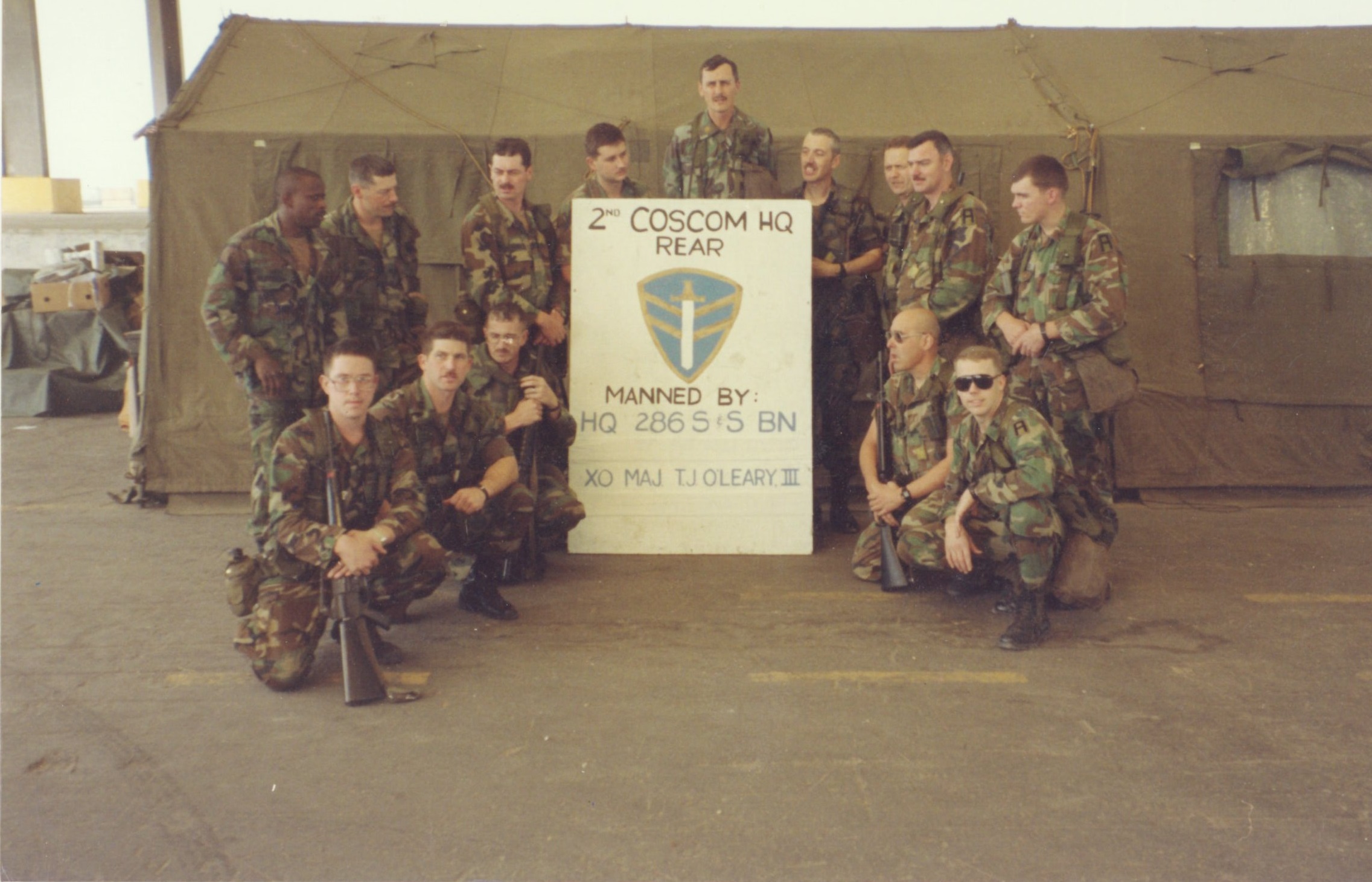Operation Desert Storm/Desert Shield
As the U.S. prepared to counter the Iraqi incursion into Kuwait in 1990, the Army realized that the National Guard was going to be an integral part of the mobilization. For the first time since the Korean War in the 1950s, the Guard saw mass mobilizations of their formations. Maine was no different.
Headquarters and Headquarters Company, 286th Supply and Service Battalion (Gardiner) and the 3620th Transportation Detachment (Augusta) were mobilized for Southwest Asia. These units deployed to Saudi Arabia where they coordinated the logistical aspects of the invasion. The U.S. military deployed 500,000 combat troops to Saudi Arabia in record time, a logistical feat that demonstrates the need for well-trained Guard units.
The 286th received alert of its mobilization on November 11th, 1990 and was ordered to Active service on November 17th. The very next day the unit moved to Fort Devens for mobilization training. This training lasted a mere six days. The company departed for Saudi Arabia on December 4th, arriving on the 6th. The company's first location was at Dammam (King Abdhul Aziz Seaport) where they were packed in amongst the logjam of equipment, armaments, and personnel arriving for the invasion. Their first mission was to serve as a brigade-echelon support group to move 122 units from the seaport to their tactical assembly areas (TAA). They took control of the 504th Maintenance Company (Active), 1174th Transportation Company (TNARNG), 1158th Transportation Company (WIARNG), and the 1052d Transportation Company (SCARNG).

The 286th moved to its next position of TAA Roosevelt in the rear of the 1st Infantry Division on Christmas morning, 1990. From here they provided transportation and supply support to the 1st ID, as well as maintained their own security for their TAA. The air war began on January 17th, 1991. The 286th took part in the 1st ID's rehearsals for the actual ground invasion, which was to be preceded by an 87,000 round artillery bombardment.
On February 14th, the 286th moved forward to its final assembly area at a forward area of the 1st ID known as Junction City. They supported the advancing combat units with their maintenance and transportation needs. On February 24th, the artillery bombardment began and obliterated all available targets after half an hour. The 1st ID rumbled forward through sixteen assault lanes with elements of the 286th's attached units following along to provide fuel and maintenance support. The ground war was over in about 100 hours. During Desert Shield/Storm, the 286th and its subordinate companies hauled 8,305,000 gallons of diesel, 140,000 gallons of water, 8,614 tons of dry cargo, fifteen M1A1 tanks, fulfilled 3,000 work orders, and drove 918,067 miles. The battalion left Junction City on March 23d, 1991 and left the theater of operations on May 9th. The unit was released from Active service on June 4th, 1991.

The 3620th (thirteen personnel) was ordered into Federal service on August 26th, 1990. It also served in the forward area of operations and received the Meritorious Unit Commendation for its service in coordinating the massive movements of trucks and equipment.
The 112th Medical Company (Air Ambulance) was mobilized and deployed to Frankfurt, Germany to backfill Active units on service in the Gulf. Headquarters and Headquarters Company, 213th Medical Brigade (HSLD) was mobilized for service in the continental United States.
The 286th Supply and Service Battalion and the 3620th Transportation Detachment were both discontinued as units in the mid-1990s. Their lineage was carried on by Battery A, 1-152nd Field Artillery.
Further reading:
Melnyk, Les. Mobilizing for the Storm: The Army National Guard in Operations Desert Shield and Desert Storm. Washington, D.C: National Guard Bureau Office of Public Affairs Historical Services Division, 2001.
Maine Army National Guard units with Southwest Asia Campaign Participation Credit: 185th Engineer Support Company